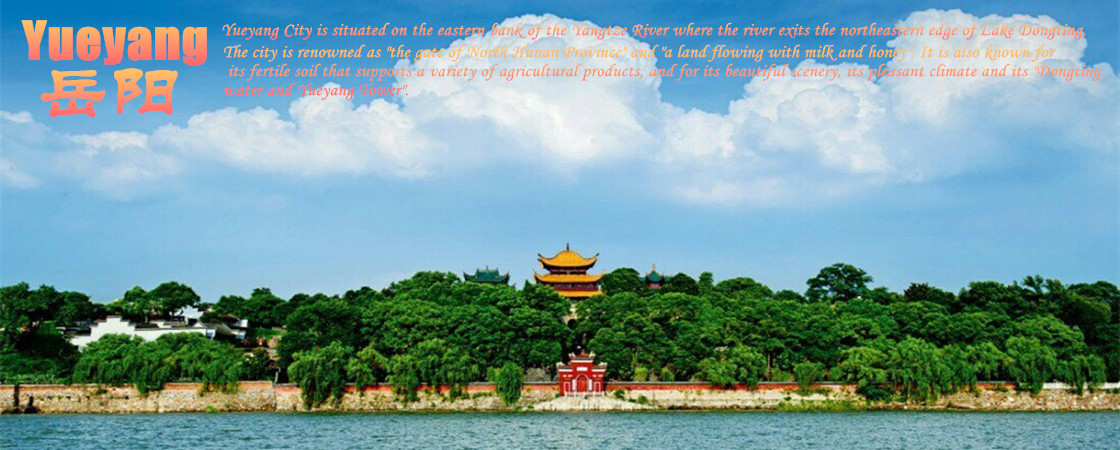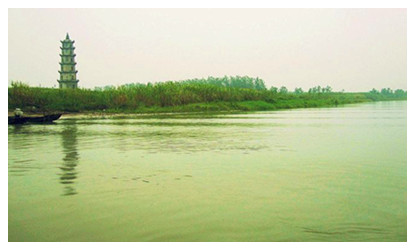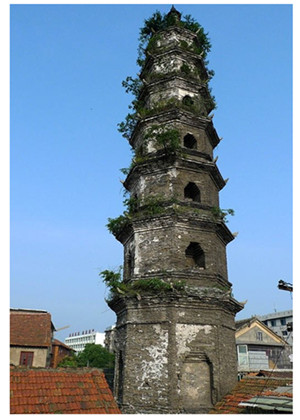
Cishi Pagoda
 listed on the cultural relics under provincial protection in 1956 for its great values in history, art and science. It was also shortlisted for the 7th batch of key cultural relics under state protection and will be made public by State Council before long.
listed on the cultural relics under provincial protection in 1956 for its great values in history, art and science. It was also shortlisted for the 7th batch of key cultural relics under state protection and will be made public by State Council before long.History and Legend
The patron who financed the Cishi Pagoda was a certain Madame Ci, who, not unlike the patrons who built Mulan Dam – Lady Qian Siniang and Mr. Lin Chongshi (especially the former) – spent her entire fortune on the project (that is reason enough to show respect to Cishi Pagoda!). The purpose of the pagoda was to evict – and thereafter ward off – evil spirits that might put a jinx on the Yangtze River, causing it to burst its banks, aka flood-inducing demons.
Features of the Cishi Pagoda
 The Pagoda body is in wooden imitation structure of pavilion-style, towering 34.58 meters and covering an area of 46 square meters. Pagoda base is paved with five layers of thick and solid granites, while rest of the pagoda is built with black bricks, bonded with yellow sand mud. The ground floor of the pagoda is comparatively high with the remaining floors descending in height to top, and the floor width decreasing layers upon layer, forming gentle lines at the edge. Black bricks are covered with grey tiles to form the eaves, decorated with mortar-made lotus pattern.
The Pagoda body is in wooden imitation structure of pavilion-style, towering 34.58 meters and covering an area of 46 square meters. Pagoda base is paved with five layers of thick and solid granites, while rest of the pagoda is built with black bricks, bonded with yellow sand mud. The ground floor of the pagoda is comparatively high with the remaining floors descending in height to top, and the floor width decreasing layers upon layer, forming gentle lines at the edge. Black bricks are covered with grey tiles to form the eaves, decorated with mortar-made lotus pattern.The gate on the first floor used to link east-west direction but was sealed when the pagoda was in an overhaul during reign of Kangxi emperor (1662-1722 AD). From the second floor to above, there's a shrine on each direction, placing a fine figure of Buddha.
On the second floor, the eave gallery protrudes approximately 30 cm with detached columns around the nooks. This style is common in the remaining floors expect for 7th floor which is with handrails and balusters on eave gallery and bronze wind chimes hanging on eave angles. The octagonal pavilion roof with a ornament pole on the top is made up of components of Tibetan Buddhism style such as covering Buddhist alms bowl and Xianglun (a ring runs through the pole). The base of Xianglun connects pagoda base with eight iron chains.
As one of the earliest brick pagoda in Hunan province, the nearly 800-year-old Cishi Pagoda is plain and solemn. Its has been listed on the cultural relics under provincial protection in 1956 for its great values in history, art and science. It was also shortlisted for the 7th batch of key cultural relics under state protection and will be made public by State Council before long.



 Ask Questions ?
Ask Questions ?